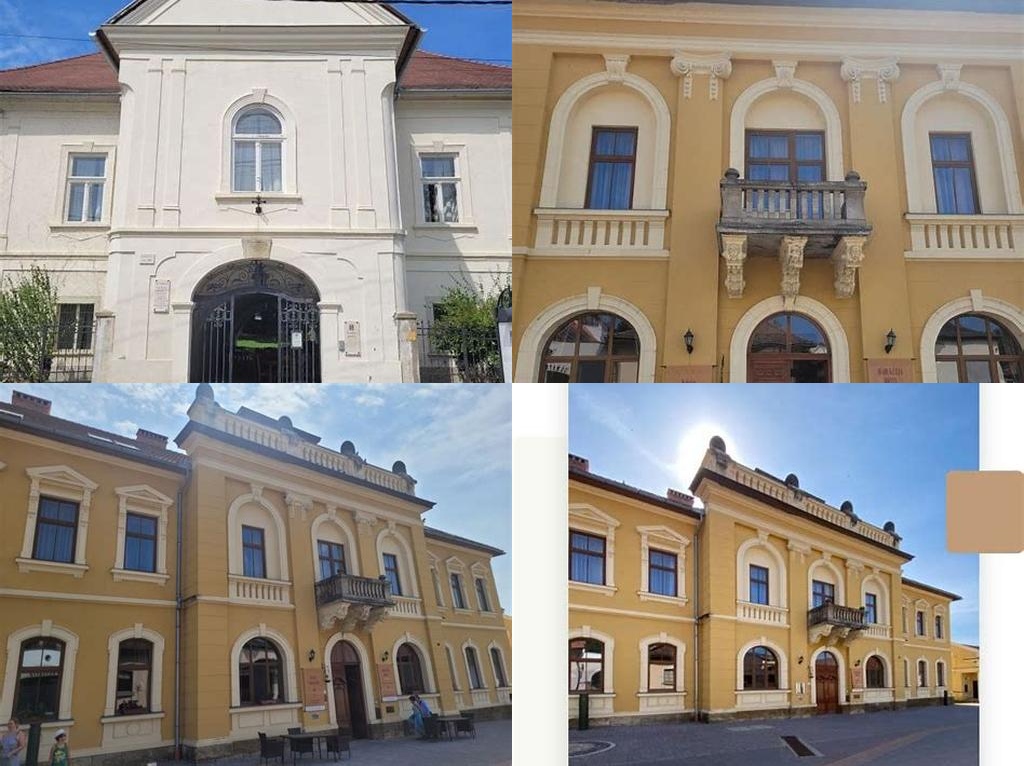
Kéler-kúria sits quietly among the undulating vineyards of Mád, a town in the heart of Tokaj-Hegyalja, Hungary’s storied wine region. As you approach, it feels almost hidden by the rows of grapevines, but make no mistake—this elegant estate has seen centuries unfold within its robust stone walls. While many head to Tokaj for its world-famous sweet wines, the Kéler-kúria invites you to pull aside the curtain of history and experience something beautifully layered: the intersection of music, wine, and the manifold tales of Hungarian nobility.
The mansion itself dates back to the early 19th century, a time when the Hungarian aristocracy was flourishing, and Mád was gaining recognition for its viticulture. The estate was constructed for the Kéler family, landowners who made their fortunes in wine and agriculture. Not only did they influence the economic development of Mád, but they were passionate patrons of the arts, hosting musicians and artists who brought life and laughter to the estate. Strolling beneath the tall acacia trees lining the driveway, it’s easy to imagine the creak of horse-drawn carriages and the sound of violins echoing through the halls.
What sets Kéler-kúria apart from so many other aristocratic homes peppered throughout the region is its deep connection to the life and works of composer Béla Kéler. Although born in nearby Bártfa in 1820, Kéler often visited the family home in Mád, drawing from the atmosphere and landscapes for inspiration. His music immortalizes the spirit of Tokaj—the rolling slopes, the golden hue of the grape harvest, and the celebratory dances that would light up evenings in the ballroom. For classical music lovers, the mansion is a pilgrimage site, a haven for those chasing the faint notes of Austria-Hungary’s romantic era. Even today, local musicians sometimes convene here to recreate the ambiance of 19th-century salons, blending the house’s past with the vibrant pulse of the present.
But you don’t need a musical background to enjoy the mansion. The architecture itself is a canvas of rural elegance, with whitewashed facades, arched windows, and sturdy wooden beams. Inside, though original furnishings are sparse—tragedy and wars have etched their scars here—the sense of grandeur lingers. Period details, such as carved lintels and faded friezes, hint at former splendor. Wander through the drawing rooms and you’ll find quiet corners perfect for contemplation, or perhaps for scribbling a few lines of poetry (or notes on a travel diary). There is a quiet melancholic beauty in these aging interiors, a testament to the passage of generations and the resilience of memory.
Outside, the estate grounds are well worth exploring. With the vineyards as a constant backdrop, you can stroll past centuries-old trees, locate the tiny family chapel, or just take in the view toward Zemplén mountains. In autumn, the countryside glows with russet and gold, and the scent of fermenting grapes brings a heady sweetness to the air. If you time your visit right, you might even catch a local harvest festival or a small concert organized on the lawns—a reminder that, while the mansion is a relic, it is still very much a living part of the community.
No visit to Kéler-kúria would be complete without tasting the fruits the family helped cultivate. Mád remains a center for wine production, and the cellars beneath the estate walls once brimmed with barrels of golden Aszú. Today, neighboring wineries pay homage to this heritage, and you’ll often find their cellarmasters eager to share the latest vintage. It’s easy to lose track of time sipping Tokaj while gazing at the silhouette of the mansion at sunset, wondering how many others have done just the same over the last two centuries.
The story of Kéler-kúria is not one of grand battles or sweeping historical drama; instead, it’s written in the subtle notes of music and wine, the laughter of guests, and the quiet persistence of a house that has seen so much and endured even more. Whether you’re a history enthusiast, a lover of architecture, or someone simply yearning for an encounter with authentic, lived Hungarian culture, this mansion is a stop that rewards the curious. In Mád, the spirit of past and present blend as seamlessly as the taste of Tokaj’s finest vintage—complex, lingering, and utterly memorable.





